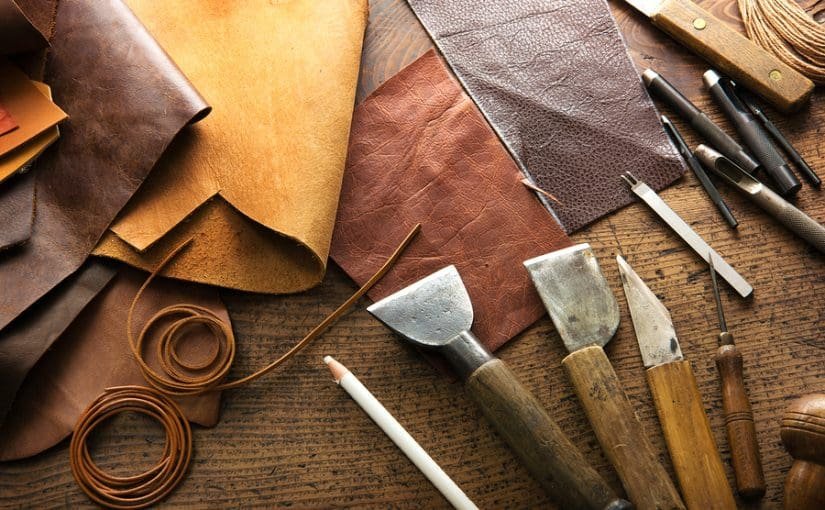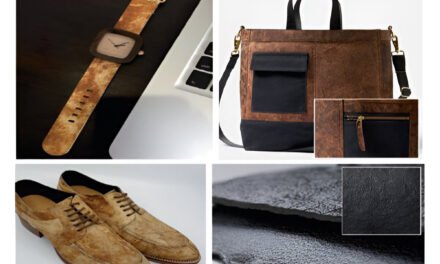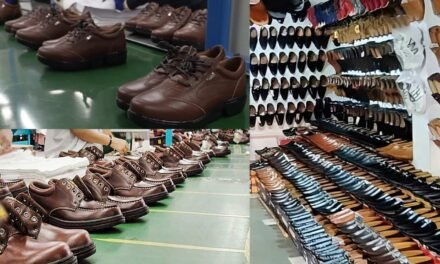In Panapakkam’s leather production, several raw materials are predominantly used to create high-quality leather products. These materials form the foundation of the leather manufacturing process, which is crucial for producing a wide range of leather goods, such as footwear, accessories, bags, and garments. Below are the key raw materials used in Panapakkam’s leather production:
1. Animal Hides and Skins
- Cattle Hides:
- The majority of the leather produced in Panapakkam comes from cattle hides (cowhide). Cattle leather is known for its durability and is used in products like shoes, bags, belts, and upholstery.
- Buffalo Hides:
- Buffalo hides are also used, particularly for more rugged products like industrial goods, saddlery, and belts. Buffalo leather is thicker and more durable than cowhide, making it suitable for certain heavy-duty applications.
- Goat Skins:
- Goat leather is widely used in the production of garments, gloves, and luxury accessories due to its softness, suppleness, and fine texture. It is especially popular in high-end fashion products.
- Sheep Skins:
- Sheepskin is less commonly used in Panapakkam but is employed in the production of soft leather goods like gloves, jackets, and luxury fashion items due to its smooth texture and warmth.
2. Chemicals and Tanning Agents
- Tannins:
- Vegetable tannins (derived from plant sources like oak, hemlock, and mimosa trees) are increasingly used in Panapakkam for vegetable tanning. This method is more eco-friendly and produces leather that is often used for high-end products, as it results in softer, more durable leather.
- Chromium Salts:
- Chromium-based tanning agents (such as chromium sulfate) have traditionally been widely used for chrome tanning, which makes leather more water-resistant and stable. While chrome tanning is efficient and cost-effective, the industry is increasingly shifting toward chrome-free methods due to environmental concerns.
- Synthetic Tanning Agents:
- In addition to natural and chrome-based agents, synthetic tanning agents (such as aldehydes and glutaraldehyde) are also used in Panapakkam, particularly in quick tanning processes or when creating specialty leathers with particular properties (e.g., improved stretch or softness).
3. Dyes and Pigments
- Leather Dyes:
- Azo dyes, direct dyes, and acid dyes are commonly used in Panapakkam’s leather production to add color to leather. These dyes are essential for achieving vibrant colors and are used in various products like footwear, bags, and accessories.
- Natural Dyes:
- There is an increasing trend toward using natural dyes (e.g., from plants, fruits, or minerals), particularly in eco-friendly leather products. These are used to cater to growing consumer demand for sustainable products.
- Pigments:
- Pigments are used in the production of leather goods that require uniform coloring, such as for premium products or automobile upholstery. They are often mixed with resins to ensure long-lasting color retention.
4. Fats and Oils
- Conditioning Oils:
- Animal fats, vegetable oils, and synthetic oils are used to condition leather and make it more supple and durable. These oils help maintain the leather’s moisture content and flexibility.
- Fatliquors:
- These are emulsions made from animal fats or vegetable oils, which are used to lubricate and soften the leather during the tanning process. They help prevent leather from becoming stiff and brittle.
5. Water
- Water for Tanning and Dyeing:
- Water is a critical raw material in the leather production process, particularly during the soaking, tanning, and dyeing phases. The availability and quality of water are important considerations in ensuring the proper treatment of hides and skins and the achievement of desired leather characteristics.
- Effluent Treatment:
- Water used in tanning also creates waste byproducts that require careful management. The water treatment systems in Panapakkam’s leather units are crucial for minimizing pollution and ensuring compliance with environmental regulations.
6. Resins and Finishing Agents
- Surface Finishing Agents:
- Resins and finishing agents are used to coat and protect the surface of leather products. These agents improve the leather’s appearance, texture, and durability, and provide resistance to dirt, moisture, and abrasion.
- Polishing Compounds:
- Leather products, especially those in the high-end fashion sector, may undergo a polishing process using wax-based compounds that give the leather a glossy finish. These finishing agents enhance the aesthetic appeal of products like shoes, bags, and accessories.
7. Additives for Special Leather Types
- Fluoropolymers for Water Resistance:
- For high-performance leather products (e.g., for outdoor use or sports equipment), fluoropolymer coatings are applied to impart water-repellency and stain resistance. These coatings are used in leather shoes, jackets, and gloves.
- Antibacterial Additives:
- Antimicrobial additives are used in leather products that require protection from bacteria, such as medical leather or sports equipment. These additives prevent the growth of bacteria, enhancing the leather’s longevity and hygiene.
8. Supporting Materials
- Lining Fabrics:
- Leather goods such as handbags, shoes, and garments often use lining materials made from fabric, such as cotton or synthetic fibers, to improve structure and comfort.
- Zippers, Buckles, and Hardware:
- For leather accessories and footwear, metal hardware (e.g., zippers, buckles, and buttons) is often sourced locally or internationally. These small components contribute to the functionality and design of finished leather goods.
9. By-Products and Waste Materials
- Leather Shavings and Scraps:
- Leather scraps and shavings generated during the production process can be repurposed in various ways, including in the creation of artificial leather, leatherboard, or composite materials.
- Waste Processing Materials:
- Materials used to treat and manage waste, such as chemical agents for effluent treatment or composting agents, are also part of the leather production cycle, ensuring that waste materials are managed sustainably.
Conclusion
The raw materials used in Panapakkam’s leather production are diverse and play a crucial role in the manufacturing of high-quality leather products. The primary raw materials include animal hides (such as cattle, goat, and buffalo), tanning agents (both natural and synthetic), dyes, oils, and specialized finishing agents. The integration of sustainable practices in sourcing raw materials and the increasing adoption of eco-friendly tanning techniques are shaping the future of Panapakkam’s leather industry. By leveraging these raw materials effectively, the region is able to meet both local and international demands for high-quality leather goods while maintaining environmental responsibility.
Hashtags
#RawMaterialsForLeather #PanapakkamLeatherProduction #LeatherManufacturingMaterials #LeatherIndustryRawMaterials #TanLeatherSupplies #PanapakkamLeatherComponents #RawMaterialSourcing #LeatherProductionPanapakkam #LeatherSectorInputs #PanapakkamManufacturing







